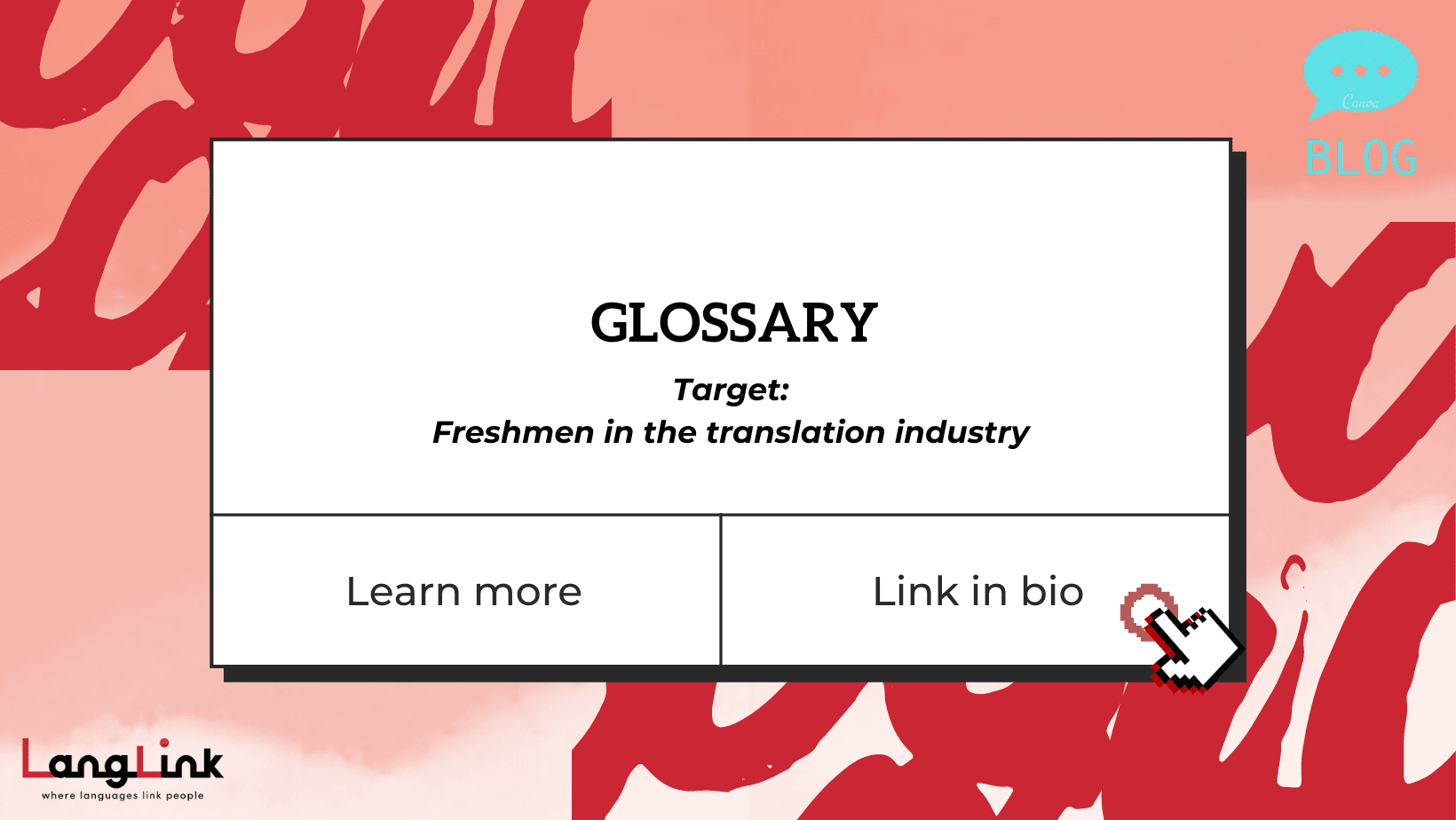Language Services Provider does not only provide translation services, we do so much more than just transferring files. The General Theory of the Translation Company explains,“LSPs facilitate global communication between the top companies in the world. We add value to the customers by using our expertise in the global markets to lead them in their journey towards world dominance.”
Today, we are going to walk you through( the freshman/ rookie/ outsider of this industry) the general guidelines of this value-creating industry.
In the Translation industry, there are certain jargons that are commonly used and are often presented in short form. Understandably, it could be overwhelming at times for outsiders that are not familiar with these terms. Fear no more, we have selected the below glossary for you, so that you can have a quick overall understanding of such terms.

1. Style Guide:
Definition:
A style guide is a set of standards for the writing, formatting, style, spelling and grammar conventions, design of documents. It is often called a style sheet, although that term also has multiple other meanings.
How it works:
The Style Guide is intended to help linguists produce work that is accurate and fully aligns with the client’s brand guidelines. It describes the values and tone of voice for the client’s app content, as well as the specific spelling, punctuation and formatting conventions.
Benefit:
It helps content creators and translators choose the preferred language elements for most effectively communicating with customers and prospects in target markets.
2. Glossary:
Definition:
A glossary is a custom database dictionary used to consistently translate the customer’s domain-specific terminology.
How it works:
Identifying Terms for the Glossary
First, determine the main audience, and read over the main text for unfamiliar terms. Then, ask your editor to help you identify the terms. Let a reader identify the terms for you and collect the terms for the glossary.
Creating Definitions for the Glossary Terms
Write a brief summary with a simple and reader-friendly definition for each term. No abbreviations in the glossary.
Formatting the Glossary
Put the terms in alphabetical order, and separate the terms with bullet points or spacing. Italicize or bold the terms in the glossary.
Benefit:
The glossary helps the translation team ensure that each time a defined key term appears in a corresponding language, it’s used consistently and correctly.
3. TM (Translation Memory):
Definition:
Translation Memory (TM) is a database of past translated content that can be used to automatically translate similar content in the future. It offers the possibility to reuse previous translations and handle language repetition across a project.
How it works:
Translation memory works in the background of the CAT (Computer-Assisted Translation) tool, offering sentence suggestions as you translate. Its memory consists of your previous translations and only identical or similar sentences are suggested.
Benefit:
Effective Translation Process
A good TM provides the past translated sentences that are identical to the current translation. Translators can refer to the data easily and speed up the translation progress.
Reduce Costs:
Since the translation progress is speeded up,
Translation memory is always the most effective with texts that include many repetitions, such as website content, games, contracts and product manuals.
Increases Translation Quality:
Dedicatedly prevent inconsistencies by storing correct phrases and sentences. Itcan be very useful when several linguists are working on the same text.
4. DTP (Desktop publishing)
Definition:
Formatting documents, images and other media types. Translations are often performed in CAT tools, so the translator does not work directly in the original file format. Desktop publishing is, therefore, an essential part of the localization process to ensure that the formatting
Benefit:
Boosted productivity.
Reduced production costs.
Improved appearance and layout of documents.
Enhanced creativity factor
5. Machine translate
Definition:
Machine Translation (MT) is completed automatically by a computer without the aid of human involvement. it is also named automated translation, an automatic or instant translation that is prevailing in the Technical manual, User interface, Legal document, Medical document, FAQ or some internal paper of the company.
How it works:
MT works with large amounts of source and target languages that are compared and matched against each other by a machine translation engine.
Benefit:
Improving efficiency,
It is a very useful tool for improving efficiency in very specific situations, often in conjunction with post-editing
Reducing costs,
Since it doesn’t involve any human translation process.
Memorizes terms
6. MTPE (Machine translation post-editing)
Definition:
MTPE is the empowerment of high-quality human reviewers and editors with advanced Machine Translation (MT) technology. MTPE may involve multiple steps, including pre-and post-processing of content. The net result is that the human reviewers produce far higher volumes of content, at a fraction of the cost, with nearly the same level of quality.
How it works:
Post-editing of machine translation output is the process of reviewing machine-translated content and editing it in such a way that it meets the requirements of the client. In other words, Machine Translation Post-Editing (or MTPE) works by having human oversight over MT output. Original sources are translated en masse by machine translation (MT) engines. Then the trained and professional editors edit the resultant content for readability and accuracy.
Benefit:
Higher accuracy than machine translation only
Better cultural sensitivity
More fluent use of slang and local terminology
Improved flow and clarity
Whether you are a freshman or a seasoned member of this industry, or if you are trying to utilize professional translation services or not, feel free to talk with us, and don’t miss any chance to boost your business.
We are happy to guide you through the process!

